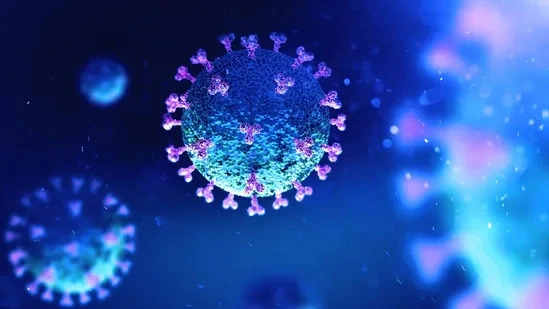India witnessed a significant surge in COVID-19 cases on Saturday, reporting 743 fresh infections, marking the highest single-day rise in 225 days, according to data from the Union health ministry. The country’s active cases stand at 3,997. Here are the key details
Seven new fatalities were reported in the last 24 hours, with three from Kerala, two from Karnataka, and one each from Chhattisgarh and Tamil Nadu. The total active Covid-19 cases in India reached 4,097, as per the latest Union Health Ministry data.
Dr Soumya Swaminathan, Former DG, Indian Council of Medical Research (ICMR), raised concerns about the JN.1 Covid-19 variant, emphasizing its increased transmissibility and infectious nature compared to other variants. The variant, belonging to the Omicron family, was responsible for driving the third Covid wave in India. However, Dr Swaminathan reassured that existing immunity, acquired through vaccines and past infections, still offers substantial protection against severe illness.
As the JN.1 variant gains attention, both central and state governments are closely monitoring the situation. A total of 145 cases of the Covid-19 sub-variant JN.1 have been detected in the country as of December 28. State health ministers are evaluating hospital preparedness, with the Maharashtra government urging vigilance for the next 10 to 15 days.
Also read: Boost Your Winter Wellness with These 3 Ayurvedic Herbs
The World Health Organisation (WHO) has classified JN.1 as a “variant of interest,” acknowledging its rapid spread but indicating a “low” global public health risk. Health authorities worldwide are on alert due to the variant’s emergence.
Dr Ujjwal Prakash, a senior consultant in Chest Medicine at Delhi’s Ganga Ram Hospital, outlined common symptoms of the JN.1 variant, including fever, runny nose, sore throat, headache, and mild gastrointestinal symptoms. Some patients may experience mild upper respiratory symptoms, typically improving within four to five days. Reports suggest additional symptoms like extreme fatigue, loss of appetite, nausea, and alterations in taste or smell may also be associated with the JN.1 variant.
As the nation approaches the New Year, heightened surveillance and awareness campaigns aim to curb the potential impact of the JN.1 variant on public health.
Surge in COVID-19 Cases Grips US Regions: CDC Map Reveals Hotspots
As COVID-19 cases continue to surge across various U.S. regions, the Centers for Disease Control and Prevention (CDC) provides a revealing map of the worst-affected areas. Here’s a snapshot of the situation and the measures being taken:
The Midwest and Northeastern regions of the United States are witnessing a concerning spike in COVID-19 infections, prompting heightened vigilance. The CDC’s map highlights specific areas grappling with alarming case numbers, urging communities to remain alert.
In response to the escalating threat and as the flu season compounds the risk of respiratory illnesses, hospitals in California, Illinois, Massachusetts, New York, and Washington D.C. are reintroducing mask mandates. The aim is to curb the spread of COVID-19 and protect public health.
‘Region Seven,’ encompassing Iowa, Missouri, Kansas, and Nebraska, has emerged as a significant concern. With a positivity rate of 18.3% in the week leading up to December 23, this region tops the list. Although showing a slight uptick of 0.1% in positivity, it demands attention and proactive measures.
Also read: Health Benefits of Drinking Hot Water in the Morning
‘Illinois, Indiana, Michigan, Minnesota, Ohio, and Wisconsin form ‘Region Five,” where a substantial 14.8% of tests returned positive results. Despite a slight decrease of 0.1% in positivity rates, the region remains an area of focus for health authorities.
Healthcare systems such as Mass General Brigham in Massachusetts, MedStar National Rehabilitation Hospital in Washington D.C., and NYC Health + Hospitals are taking decisive action. They are enforcing mask mandates for staff in direct patient contact until COVID-19 rates subside, prioritizing safety protocols.
State health departments are issuing advisories to intensify mitigation efforts. The Illinois Department of Public Health (IDPH) has recommended healthcare facilities to step up their mitigation strategies. In Yolo County, California, heightened COVID-19 and respiratory virus levels prompt recommendations for mask use in crowded indoor spaces.
Another crucial tool provided by the CDC is a map illustrating high rates of hospital admissions from Idaho to New England, reaching as far south as Texas. Approximately 7.36% of the U.S. exhibits high levels of hospital admissions per 100,000 people. However, challenges arise in assessing hospitalizations due to the low populations in certain areas, as observed in Lemhi County, Idaho.
The situation remains dynamic, requiring ongoing monitoring and coordinated efforts to mitigate the impact of the COVID-19 surge on public health.

